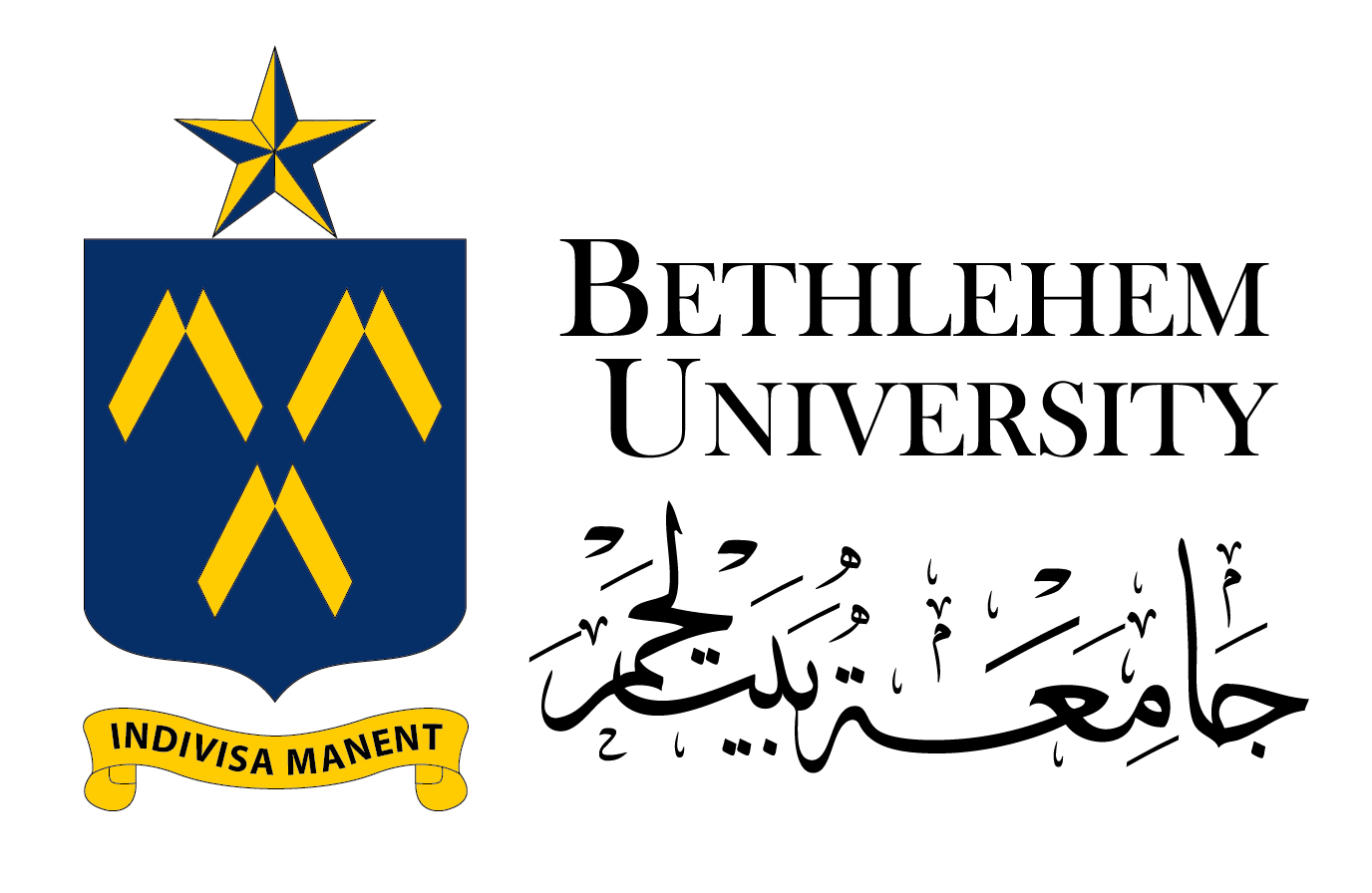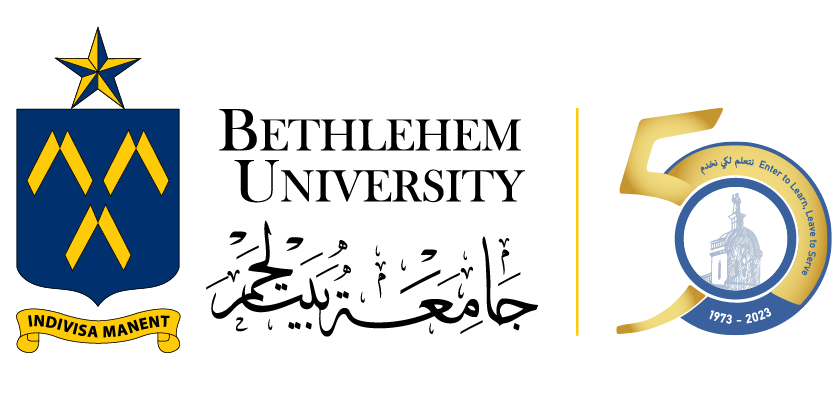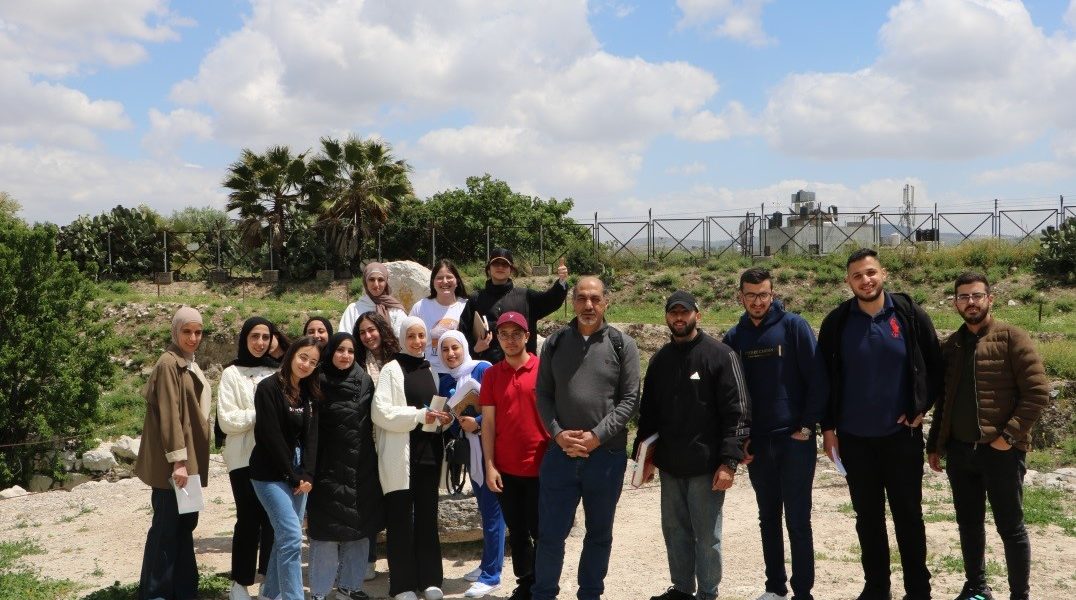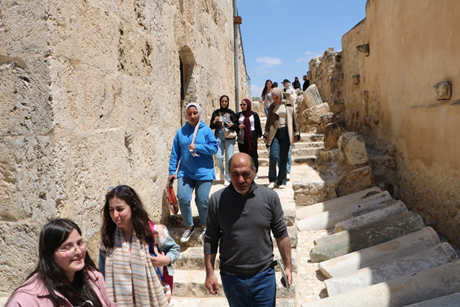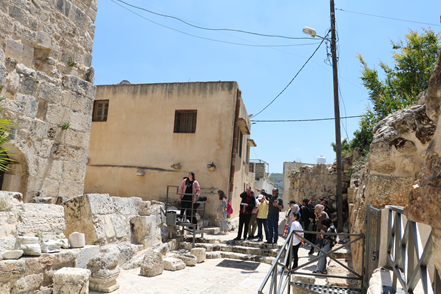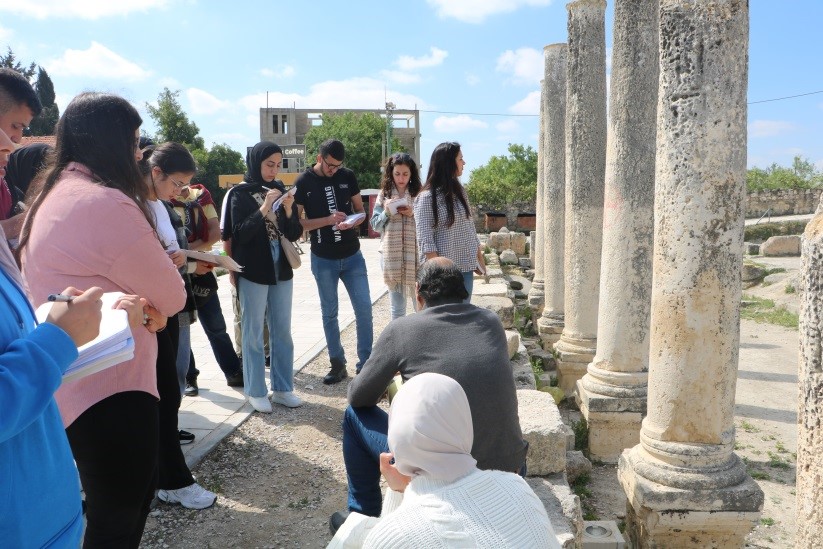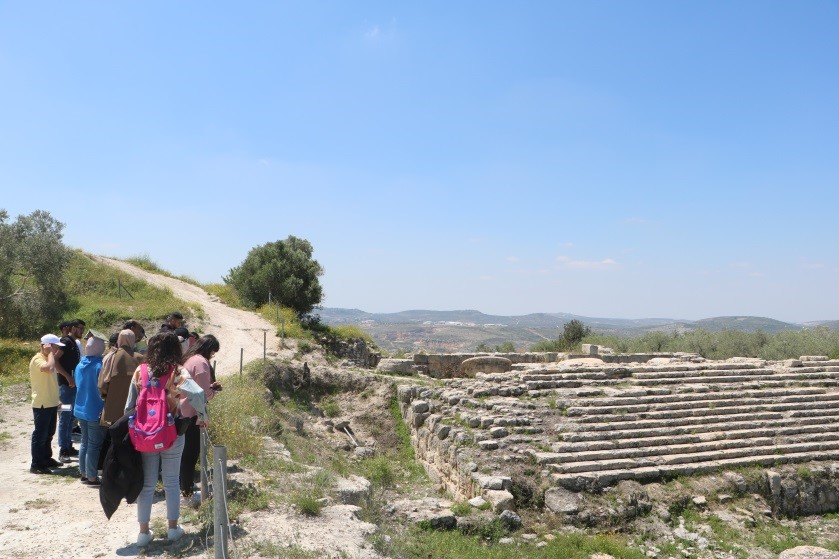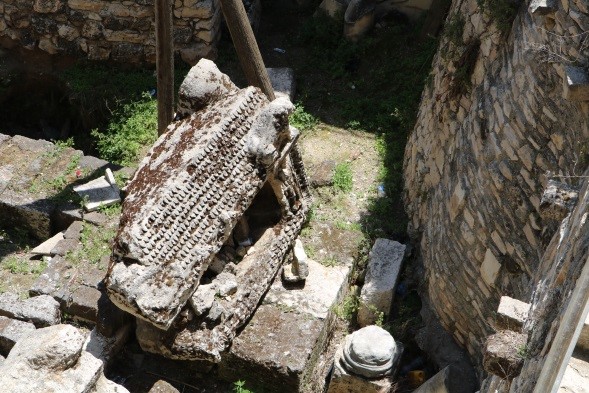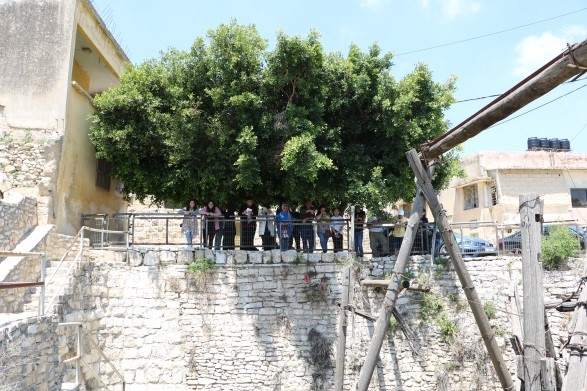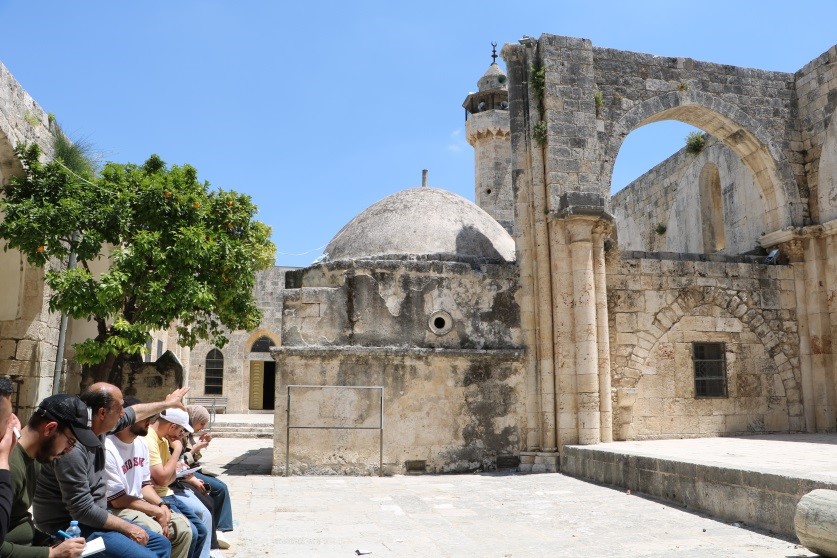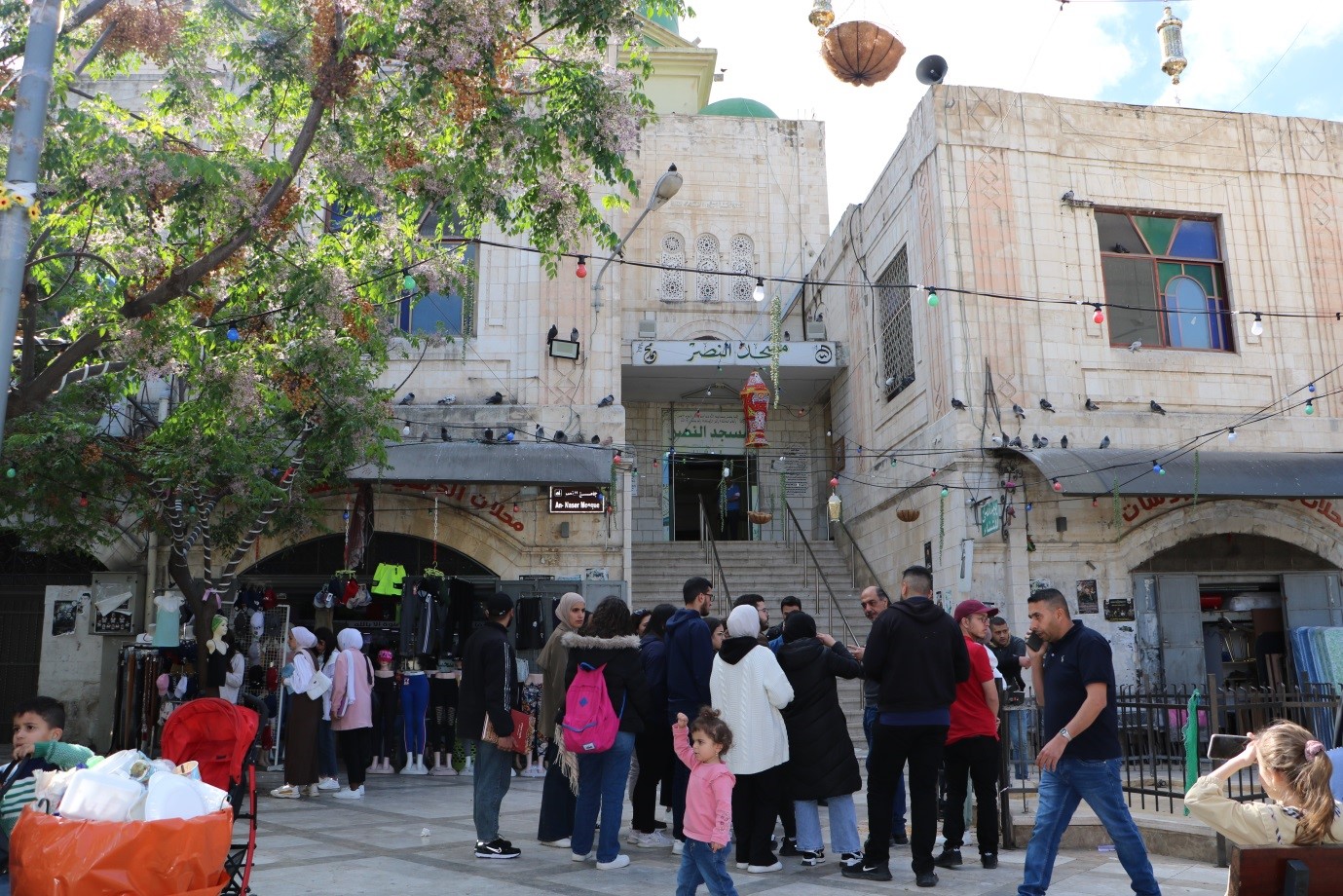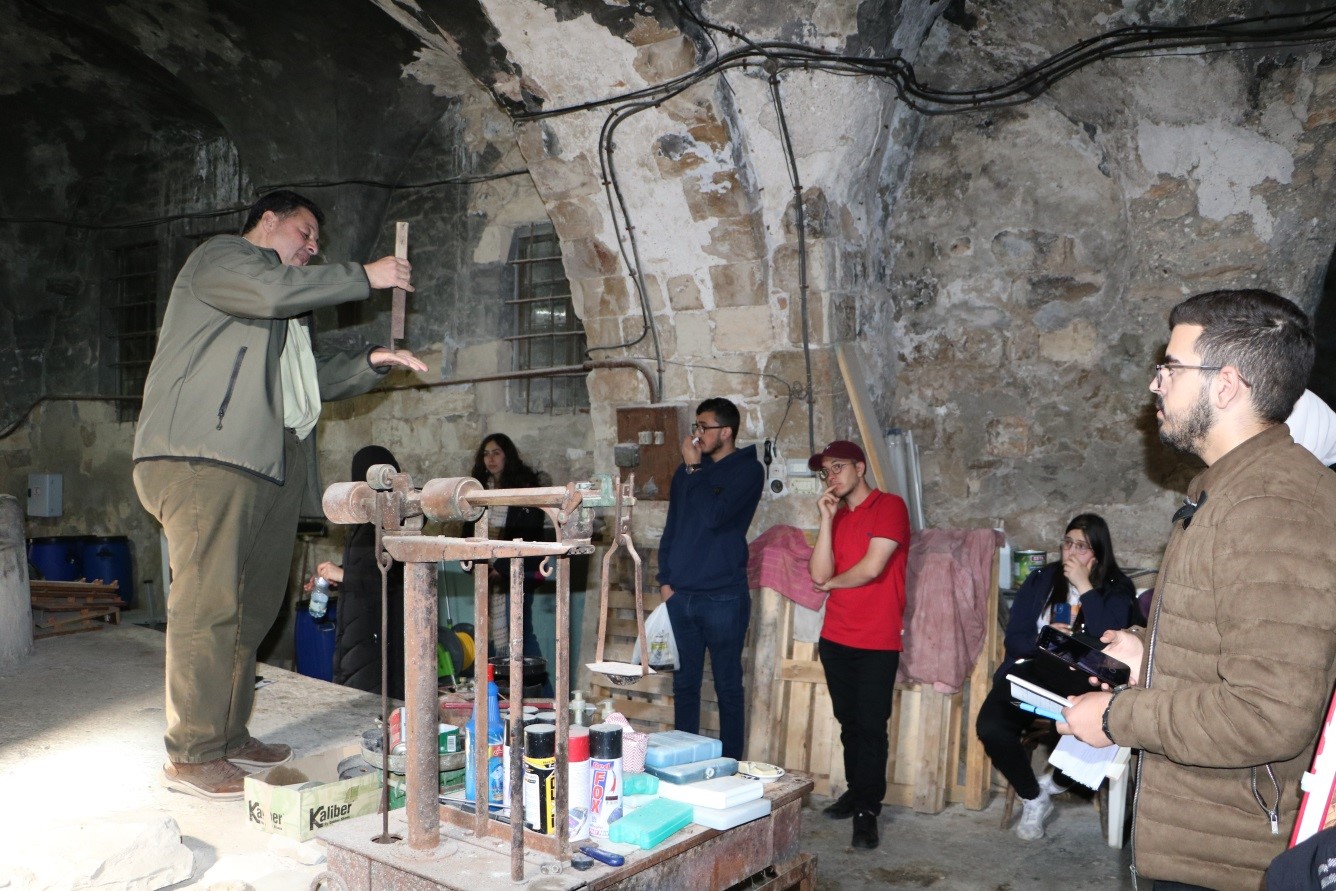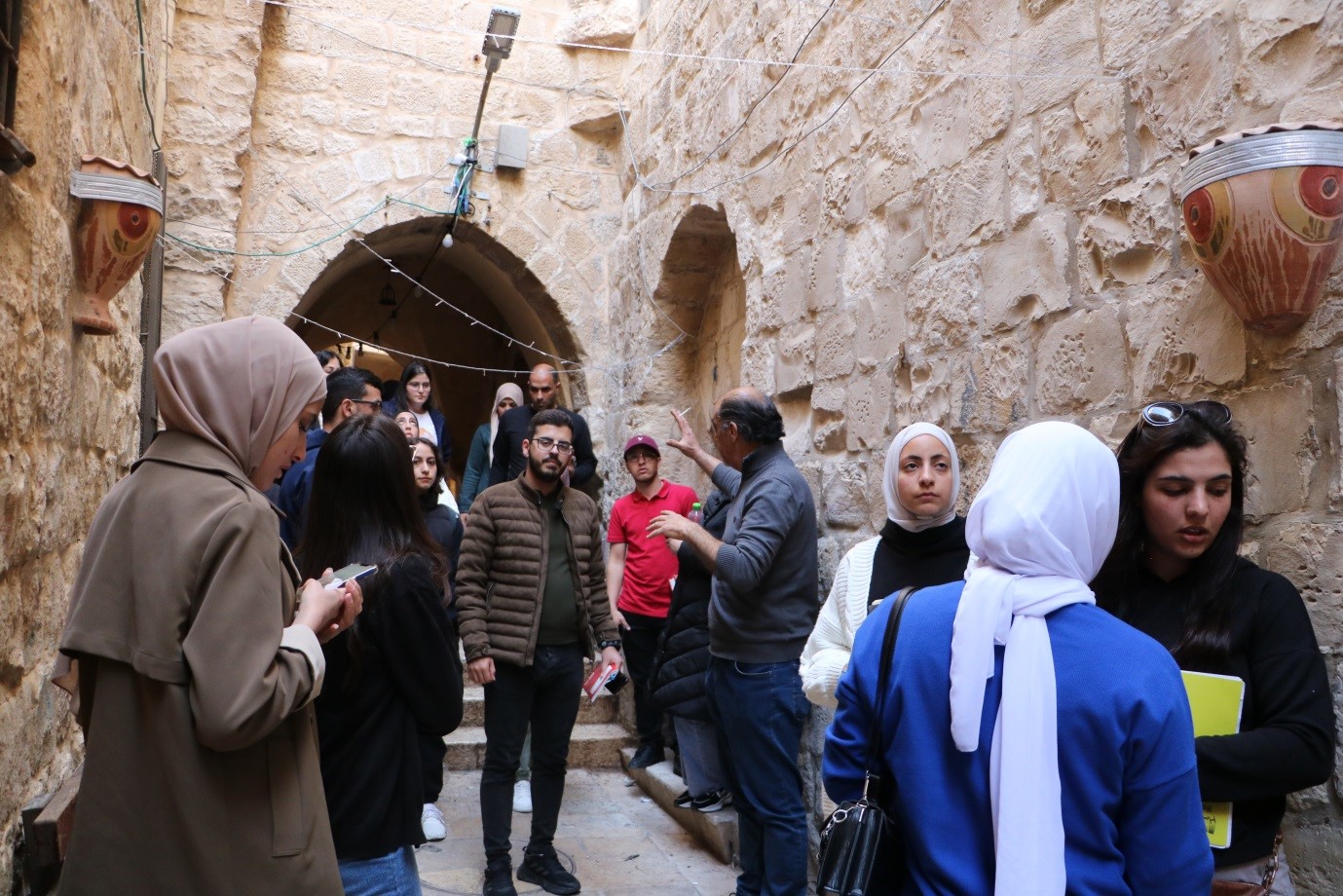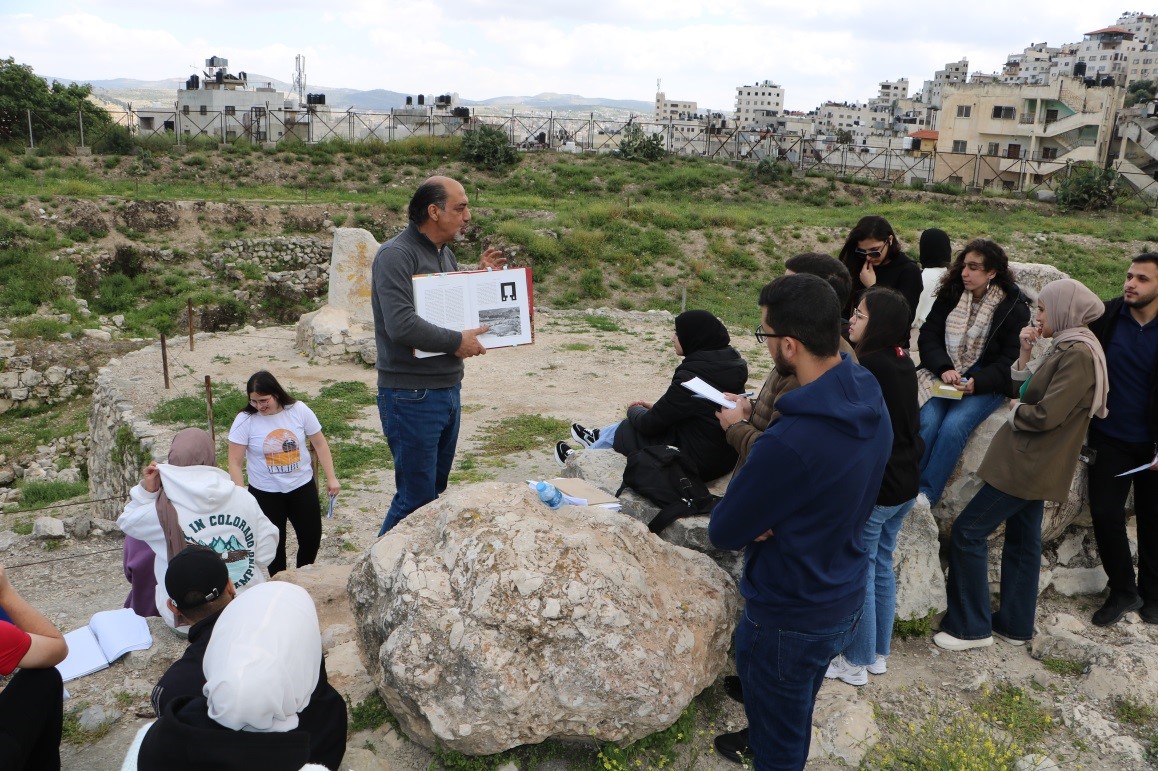The Students of Archaeology and Cultural Heritage Program (ARCH 101 cousre): Introduction to Archeology at Bethlehem University completed a study trip to the city of Nablus and Sabastiya on 30 April 2023 and 1 May 2023, as part of a series of trips that will bolster their theoretical knowledge. The trip covered valuable information about the road from Bethlehem to Nablus and the area between these two cities, including villages, landscapes, towns, and cities, in addition to the colonial Zionist settlements and their impact on the Palestinian landscape. The students prepared presentations about some of the sites included in the trip to develop the skills of research and presentation of information about Archaeological and cultural heritage sites or buildings.
The purpose of the trip
The trip enabled the archeology students to learn about the archeological sites and the social and political history of Nablus and Sabastiya, and also allowed them to observe the importance of preserving Archaeological sites and the cultural heritage and their role in that regard. They saw the Palestinian archeological sites about which they received information in the classroom, such as Shekmu “Shechem” Tell Balata, Sabastiya, Old Nablus, and Mt Gerizim. The students also tracked the development phases of Nablus and Sabastiya and the socio-cultural scene of the area throughout the different periods.
From Shekmu “Shechem” to Neapolis on 30 April 2023
The tour of Tell Balata shed light on the urban stability of the City of Shekmu and its location from the Middle Bronze Age until the end of the Iron Age. The students observed the architectural elements of the Shekmu, i.e. “The fortification system, the walls, the city gates planning, the fortified temple the alter, and the houses”. They also learned about the transition to the location of Mt. Gerizim during the Hellenistic period and later the establishment of the new city Flavia Neapolis and its Urban planning during the Roman-Byzantine, and the Islamic periods.
From Neapolis to Nablus (The Old City of Nablus)
A historical overview of the Old City of Nablus from the Roman, until the contemporary time, shed light on the physical layout of the city “Flavia Neapolis” from its foundation in 72 AD during the time of the Roman Emperor Vespasian (69–79 AD) until contemporary times. The sites visited in Nablus are Jacob’s Well-church, Mt. Gerizim, the Samaritans and the Roman theater, Hebodrum, Roman Mausoleums, and cemeteries, the remains of the Roman Decumanus, the Suqs\ markets, Khans, Harat “Quarters”, as well as heritage crafts and sites such as the traditional industries “Soaps” factures, Ottoman Baths (Hamaams), and the Palaces “Qusur” associated to the families of Nablus that ruled the city like the Touqan family, al Nimer family, and the Abd al-Hadi’s palaces. The tour ended at 5:30 in the evening.
In Sabastiya, students checked in Bayet al Diyafa in Sabasiya before visiting the adjacent village of Nesf Jbail where they had dinner and held an open discussion of the Nablus tour.
Sabastiya tour on Monday 1 May 2023
After breakfast at the guest house in Sabastiya, the trip started at 10:00 in the morning with a historical overview of Sabastiya from the Iron Age II until contemporary times (the tour included Omri’s and Ihab’s palace then remains of the tower from the Hellenistic period, the Roman remains; such as the Hippodrome, the theater, the Temple of Augustus, the Byzantine church of the “Invention of the Head of John Baptist”, the Crypt of the church, the western gate, the Colonnaded Street, the forum, and the basilica.
In the afternoon, the group visited the domed tomb that dates to the end of the second century AD beginning of the third century AD. The remains of the Crusader Cathedral, and its fortification, the shrine of John the Baptist-Prophet Yahiya/ and the center of Sabastiya in the early and late Islamic periods, and finally the excavations conducted by al-Quds University and rehabilitation works of buildings and sites carried out by the Pro Terra Sancta Foundation in Sabastiya.
The students of the Archaeology and Cultural Heritage Program at Bethlehem University extend their thanks and appreciation to Pro T. S. for funding all field trips of the Archaeology program.
Some photos of the Field Trip:
